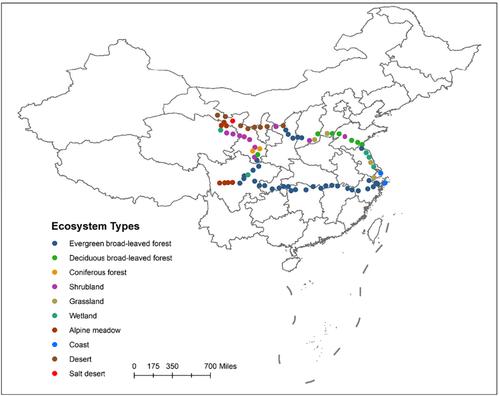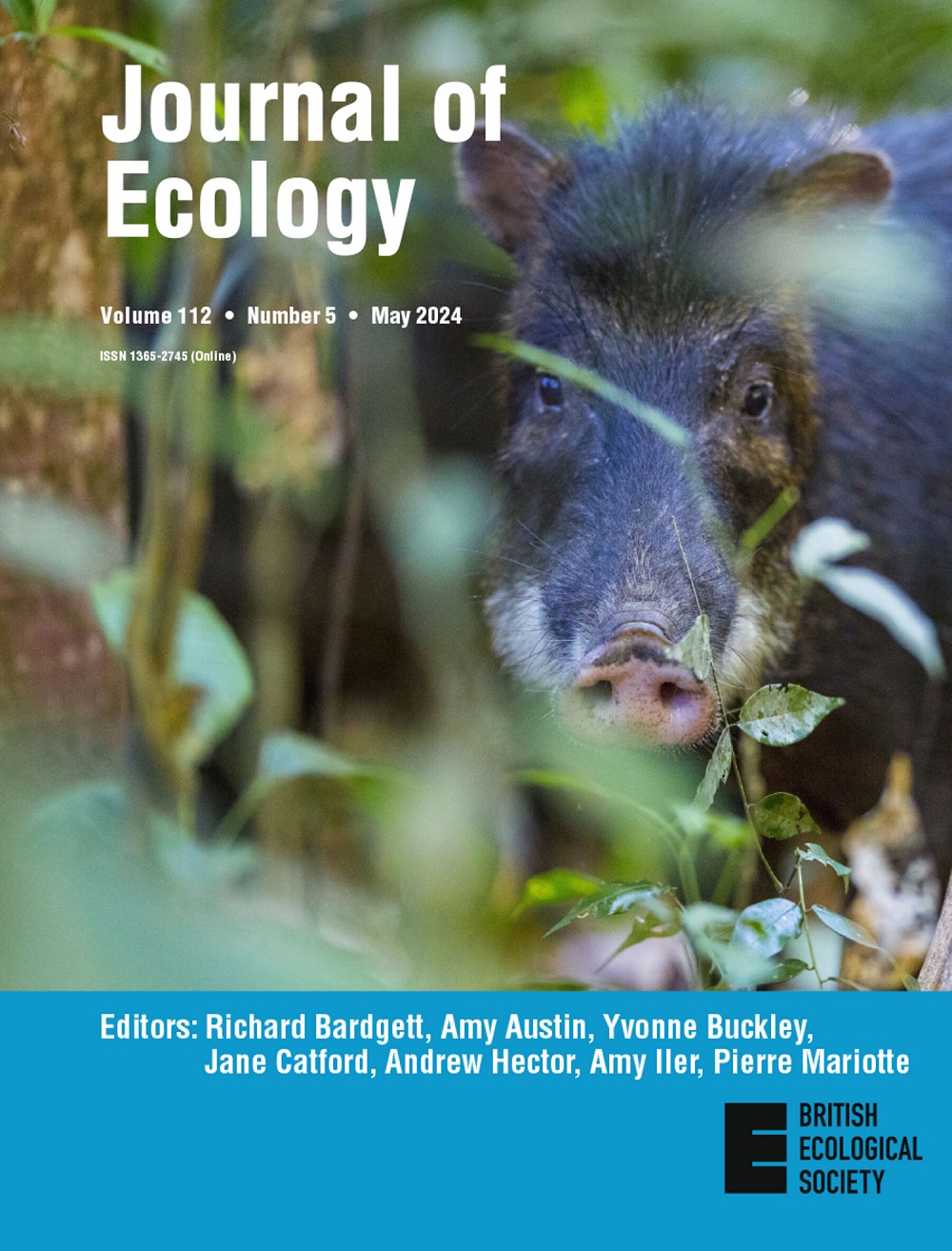利用中国62种青蒿的叶、茎、根对生物地球化学生态位假说进行检验
IF 5.3
1区 环境科学与生态学
Q1 ECOLOGY
引用次数: 0
摘要
生物地球化学生态位(BN)假说是基于特定生物的主要元素的浓度在化学计量上匹配,以使其充分发挥作用。然而,目前尚不清楚不同的植物器官是如何表现BN的,以及环境或进化在多大程度上影响BN。本研究测量了中国62种青蒿1022株的叶片、茎和根中C、N、P、K、Ca和Mg的浓度,以量化这三个器官的生物量。叶片的氮化硼与茎和根的氮化硼相抵消,且体积较小。3个器官的生物量对环境梯度的敏感性存在差异,在生物量和位置上,叶片对环境变化的响应均低于茎和根。环境梯度对三个器官BN位置的影响大于对BN体积的影响。叶片和根的BN体积和位置不具有系统发育信号,而茎BN具有较弱的系统发育信号,即来自不同分支的重复物种分化解释了三个器官的大部分BN变异。由于不同的生理机制和不同器官对氮化硼的反应不同,单器官的元素组成不能完全检验氮化硼假说。至少在蒿属植物中,叶片被强烈地限制在一个有限的元素生态位空间中,以支持叶片功能,特别是光合作用的相对稳定的元素供应。相比之下,茎和根发育出更大的元素体积,也代表营养储存和其他功能。在不同的环境条件下,蒿属植物的生物量和位置表现出不同的环境响应,使这些物种能够调节元素浓度,同时保持整体元素组成的稳定。合成。综上所述,现存青蒿种群的生物多样性主要由对当前环境条件的短期表型反应和/或基因型变异决定,而最近进化的物种多样性主要来自物种特异性和器官特异性对营养物质的利用,很少受系统发育早期分化的影响。本文章由计算机程序翻译,如有差异,请以英文原文为准。


Testing the biogeochemical niche hypothesis using leaves, stems and roots of 62 Artemisia species across China
求助全文
通过发布文献求助,成功后即可免费获取论文全文。
去求助
来源期刊

Journal of Ecology
环境科学-生态学
CiteScore
10.90
自引率
5.50%
发文量
207
审稿时长
3.0 months
期刊介绍:
Journal of Ecology publishes original research papers on all aspects of the ecology of plants (including algae), in both aquatic and terrestrial ecosystems. We do not publish papers concerned solely with cultivated plants and agricultural ecosystems. Studies of plant communities, populations or individual species are accepted, as well as studies of the interactions between plants and animals, fungi or bacteria, providing they focus on the ecology of the plants.
We aim to bring important work using any ecological approach (including molecular techniques) to a wide international audience and therefore only publish papers with strong and ecological messages that advance our understanding of ecological principles.
 求助内容:
求助内容: 应助结果提醒方式:
应助结果提醒方式:


